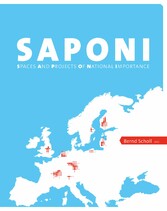Suchen und Finden
Service
SAPONI - Spaces and Projects of National Importance
Bernd Scholl
Verlag vdf Hochschulverlag AG, 2011
ISBN 9783728134615 , 132 Seiten
Format PDF
Kopierschutz Wasserzeichen
2 Core of spaces and projects of national importance (p. 20-21)
The approach for the applied research project SAPONI is based on stakeholder involvement with the goal to get closer to the core of SAPONIs and to elaborate recommendations on how to deal with them. By finding answers to the four leading questions why, what, how and who, the phenomenom of SAPONIs and their implications and needs may be clarified.
2.1. Key.questions.on.SAPONIs
2.1.1. Why
Why are some spaces and projects of national importance? First, SAPONIs can substantially change existing national structures and balances, therefore, SAPONIs will always have an impact far beyond their local or regional level. This takes place either intentionally or by accident.
In particular, the SAPONI projects described here are modifying national and trans-national infrastructure systems, e.g., the railway system in Switzerland, or they introduce new major public transport infrastructure, e.g., in Copenhagen, they provide a concept for a national polycentric urban system, e.g., in Germany, or they enhance European integration and cohesion through a targeted implementation of EU environmental and regional policy as in the Danube Region. However, coordinated action is needed to implement all these substantial changes, specifically when seen in the light of the often very strong individual sector policy interests that are involved and which are often the driving force of the development, despite simultaneously intended political, economic or spatial strategies.
In addition to complexity and scale, SAPONIs have a further impact on the national level, often a cross-border impact as well, which causes the involvement of interests beyond the national level. The examples of Switzerland and Austria show the crossborder impact by definition, as they are part of multinational European development strategies. However, the other largescale or pilot projects presented in this project also demonstrate the cross-border impact.
SAPONIs provide a base for specific political and spatial agendas in long-term processes. From a governance point of view, five basic reasons why certain spaces and projects should be labelled as „of national importance“ can be mentioned:
1. To concentrate the forces of the mutual interests involved in the spaces and projects of national importance and to provide an overview of the complex, often long-term processes.
2. Based on an overview of spaces and projects of national importance, it will be possible to prioritise the plans and investments that should be realised in the short-term, medium- term and long-term perspective. In addition, such an overview will make it possible to involve all relevant actors at the right time during the implementation process.
3. The related decision processes will enable the respective country and its participating regions, communities and cities to find solutions for vital spatial conflicts.
4. In democratically composed societies, the open, transparent and comprehensible discussion connected with risks and opportunities is a necessary precondition for finding solutions that are sustainable and may take many years, sometimes decades, to implement.
5. The priority of specific spaces for a specific time managed by cooperative forms of organisation is an essential precondition for working out sustainable solutions.
These reasons make it clear that spaces of national importance by nature are specific development areas where above-average major investments are made for a foreseeable time span. Furthermore, sustainable solutions are often envisaged, which requires that the most varied sector interests and needs be integrated at the right time. Because of the importance of the projects for the respective countries, regions and communities, they are strategic projects of national importance."



